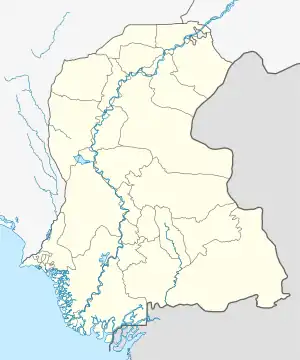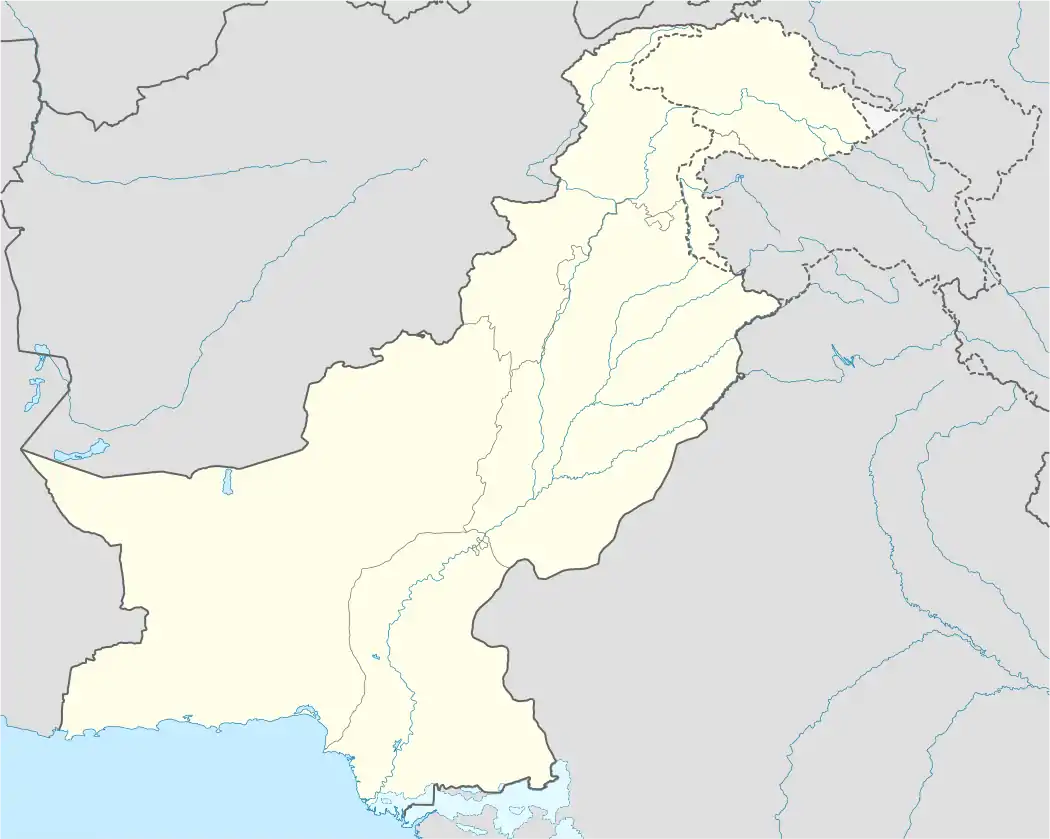| Siege of Debal | |||||||||
|---|---|---|---|---|---|---|---|---|---|
| Part of Umayyad campaigns in India and Umayyad conquest of Sindh | |||||||||
| |||||||||
| Belligerents | |||||||||
| Umayyad Caliphate | Brahmin dynasty of Sindh | ||||||||
| Commanders and leaders | |||||||||
| Muhammad ibn al-Qasim | Unknown(nephew of Raja Dahir) | ||||||||
| Units involved | |||||||||
|
6,000 Syrian Horse |
4,000 Rajputs 3,000 Brahmins | ||||||||
The siege of Debal, also known as the siege of Debul, took place in the autumn of 711 AD, in which the Umayyad forces under Muhammed Ibn al-Qasim besieged Debal, a city under Brahmin dynasty of Sindh ruled by Raja Dahir. Umayyads defeated the inhabitants of the fort by the order of Al-Hajjaj and captured it.
In 711, Muhammed ibn Qasim marched towards Debal with 6,000 Syrian horses and 3,000 camels with a good amount of Arab soldiers. The fort was protected by the nephew of King Dahir, 4,000 Rajputs and 3,000 Brahmins.[1][2] Umayyad forces encamped outside the fort for 7 days waiting for the permission letter to attack. On the eight day, Muhammed ibn Qasim received the letter from Al-Hajjaj and eventually the Umayyad army scaled the walls of Debal and its people surrendered.[3][4][2][5][6]
References
- ↑ Wolseley Haig. The Cambridge History Of India Volume III. BRAOU, Digital Library Of India. At The University Press Cambridge. p. 2.
- 1 2 Board, Pratiyogita Darpan Editorial. Pratiyogita Darpan Extra Issue Series-16 Indian History–Medieval India. Upkar Prakashan. p. 36.
- ↑ The Muslim World. Motamar al-Alam al-Islami; World Muslim Congress. 2001. p. 48.
- ↑ Kalichbeg (1900). The Chachnamah An Ancient History Of Sindh. p. 81.
- ↑ Indian Armed Forces Yearbook. Indian youth. 1961. p. 488.
- ↑ Mahajan, V. D. (2007). History of Medieval India. S. Chand Publishing. p. 17. ISBN 978-81-219-0364-6.


